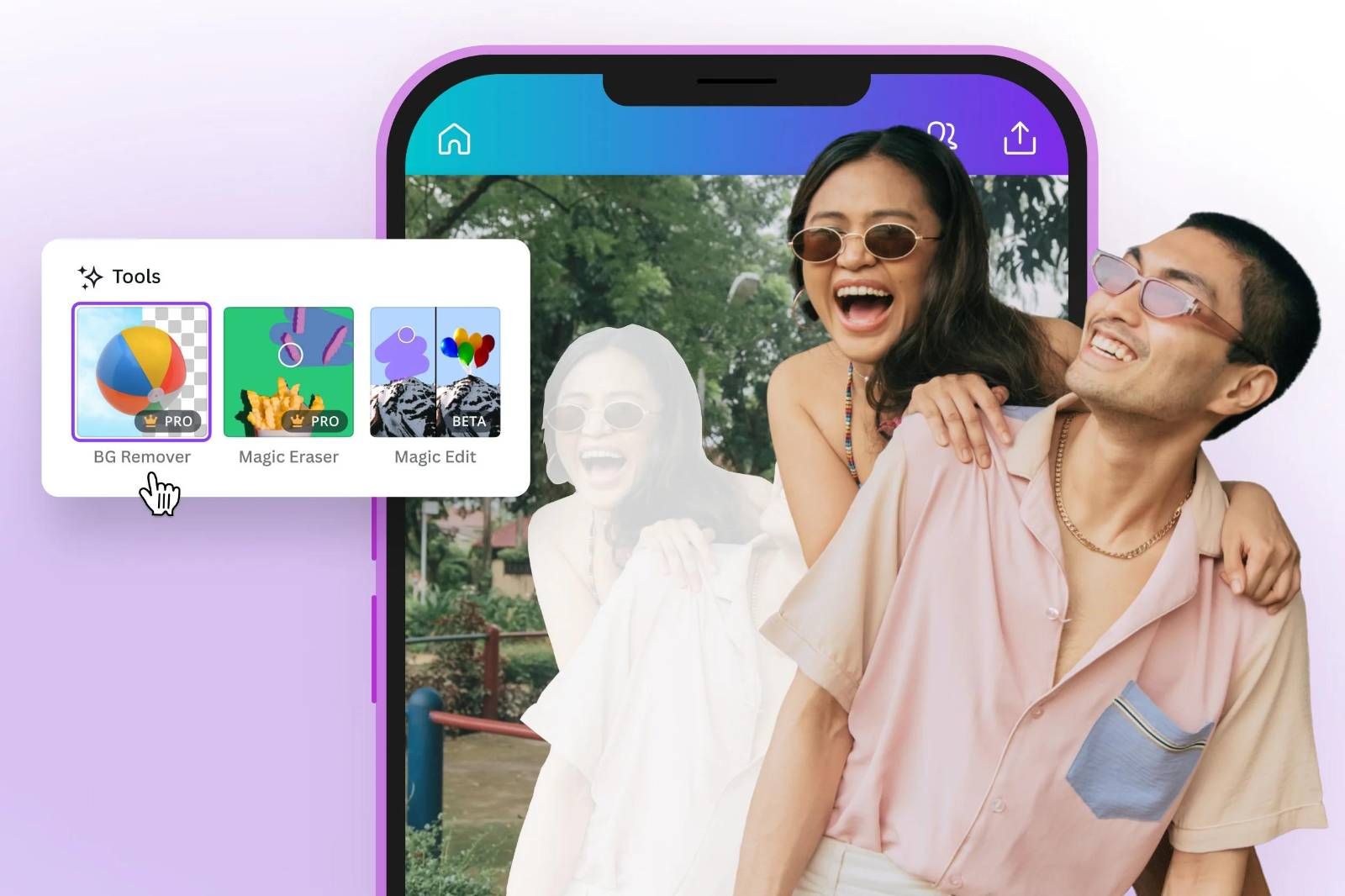

Discover the power of AI to transform your photos effortlessly. Let’s learn more about this topic below with Bottle Flip, exploring how free AI tools are revolutionizing image editing and background removal for students and creators alike. From enhancing visual content to streamlining creative workflows, these innovative solutions are changing the game.
In recent years, artificial intelligence has made significant strides in the realm of image processing and manipulation. One of the most exciting developments is the emergence of free AI tools that can change photo backgrounds instantly. These tools have become a game-changer for students and content creators, offering professional-grade results without the need for extensive editing skills or expensive software.
The ability to swap out backgrounds opens up a world of creative possibilities. Whether you’re a student working on a visual presentation or a content creator crafting eye-catching social media posts, these AI-powered tools can help you achieve stunning results with minimal effort. The technology behind these tools is constantly evolving, with algorithms becoming more sophisticated and capable of handling complex image compositions.
One of the key advantages of using AI for background removal is the speed and accuracy it offers. Traditional methods of background removal often require painstaking manual work, carefully tracing around subjects to separate them from their surroundings. AI tools, on the other hand, can analyze an image and identify the main subject in a matter of seconds, automatically removing the background with remarkable precision.
The process of AI-powered background removal is fascinating and involves several complex steps. At its core, these tools use deep learning algorithms trained on vast datasets of images to recognize and differentiate between foreground subjects and backgrounds. When you upload an image to one of these tools, the AI quickly analyzes the visual information, identifying edges, colors, and textures to determine what constitutes the main subject.
Once the subject is identified, the AI creates a mask that separates it from the background. This mask is then refined to ensure smooth edges and accurate selection, even with challenging elements like hair or transparent objects. The background is then removed, leaving you with a clean cutout of your subject that can be placed onto any new background of your choosing.
What’s particularly impressive about these AI tools is their ability to handle complex scenarios that would be difficult even for skilled human editors. For instance, they can accurately detect and preserve fine details like individual strands of hair or the transparency of glass objects. This level of precision was once the domain of professional photo editors but is now accessible to anyone with an internet connection.
The field of AI image processing is rapidly advancing, with new techniques and algorithms being developed all the time. One area of significant progress is in the realm of semantic segmentation, where AI can not only separate foreground from background but also identify and categorize different elements within an image. This allows for more intelligent and context-aware editing capabilities.
Another exciting development is the use of generative adversarial networks (GANs) in image editing. These AI systems consist of two neural networks that work against each other: one generates new images, while the other tries to distinguish between real and generated images. This competition leads to increasingly realistic and high-quality results, including the ability to generate entirely new backgrounds or elements to add to an image.
The availability of free AI tools for changing photo backgrounds offers numerous benefits for both students and content creators. For students, these tools can enhance their academic projects and presentations. Imagine being able to transport yourself to historical locations for a history report or create professional-looking product mockups for a business class. The possibilities are endless, and the ability to manipulate images can help students better visualize and communicate their ideas.
Content creators, on the other hand, can leverage these tools to streamline their workflow and expand their creative horizons. Bloggers and social media influencers can create consistent and visually appealing content by maintaining a uniform background across their images. Graphic designers can quickly iterate on different design concepts by swapping out backgrounds without the need for complex layering techniques. Even video content creators can benefit from AI background removal, using it to create green screen effects without actually needing a physical green screen.
One of the most significant advantages of these AI tools is the time they save. What once might have taken hours of meticulous editing can now be accomplished in minutes or even seconds. This efficiency allows creators to focus more on the creative aspects of their work rather than getting bogged down in technical details. It also enables them to produce more content in less time, potentially increasing their output and reach.
For both students and creators, the ability to easily change photo backgrounds opens up new possibilities for visual storytelling. Students can create more engaging presentations by placing themselves or subjects in relevant contexts. A science project about space exploration, for example, could feature images of the student “on the surface of Mars” or floating in a space station. This visual element can help capture attention and make complex topics more accessible and memorable.
Content creators can use background changing tools to craft compelling narratives and themes across their work. A travel blogger could maintain a consistent aesthetic by placing subjects against iconic landmarks or scenic vistas, even if the original photos were taken in different locations. Fashion influencers could showcase outfits in various settings without the need for multiple photoshoots. The ability to control the background allows for greater creative freedom and helps in building a cohesive brand identity.
While AI-powered background removal tools offer tremendous benefits, it’s important to be aware of potential challenges and ethical considerations. One of the primary concerns is the authenticity of images. As it becomes easier to manipulate photos, there’s a growing need for transparency about edited images, especially in contexts where authenticity is crucial, such as journalism or academic documentation.
Another challenge is the potential overreliance on these tools. While they can produce impressive results, they shouldn’t replace the development of fundamental design and photography skills. Students and creators should view AI tools as aids to their creativity rather than substitutes for learning and practicing core techniques.
There are also technical limitations to consider. While AI has made significant strides, it’s not perfect. Complex images with intricate details or unusual lighting conditions may still pose challenges for automated background removal. Users should be prepared to do some manual touch-ups or adjustments in certain cases to achieve the best results.
Privacy concerns are another important consideration. Many free AI tools require users to upload their images to cloud-based servers for processing. It’s crucial to read and understand the terms of service and privacy policies of these tools to ensure that your images and data are being handled securely and ethically.
To make the most of AI background removal tools while addressing these challenges, it’s important to develop responsible use practices. For students, this might involve learning about digital literacy and the importance of citing sources and disclosing when images have been manipulated. Educators can play a role in guiding students on the appropriate use of these tools in academic contexts.
Content creators should consider developing clear policies about their use of AI editing tools and be transparent with their audience about when and how images are altered. This transparency can help maintain trust and authenticity in their work. Additionally, creators should strive to use these tools in ways that enhance rather than misrepresent reality, especially when creating content that purports to be documentary or journalistic in nature.
As the technology continues to evolve, it’s likely that we’ll see more sophisticated tools for detecting AI-manipulated images. This could lead to a new ecosystem where the ability to verify image authenticity becomes as important as the ability to edit images. Staying informed about these developments and adapting practices accordingly will be crucial for both students and creators.
In conclusion, free AI tools for changing photo backgrounds represent a powerful resource for students and content creators. They offer unprecedented ease and speed in image manipulation, opening up new creative possibilities and enhancing visual storytelling. However, with this power comes the responsibility to use these tools ethically and thoughtfully. By understanding both the potential and the limitations of AI-powered image editing, users can harness these tools to create compelling, innovative content while maintaining integrity and authenticity in their work.
As we look to the future, it’s clear that AI will continue to play an increasingly significant role in creative and educational processes. The key for students and creators will be to embrace these technologies as powerful aids while continuing to develop their own skills, critical thinking, and creative vision. By doing so, they can leverage the best of what AI has to offer while still producing work that is uniquely human and meaningful.